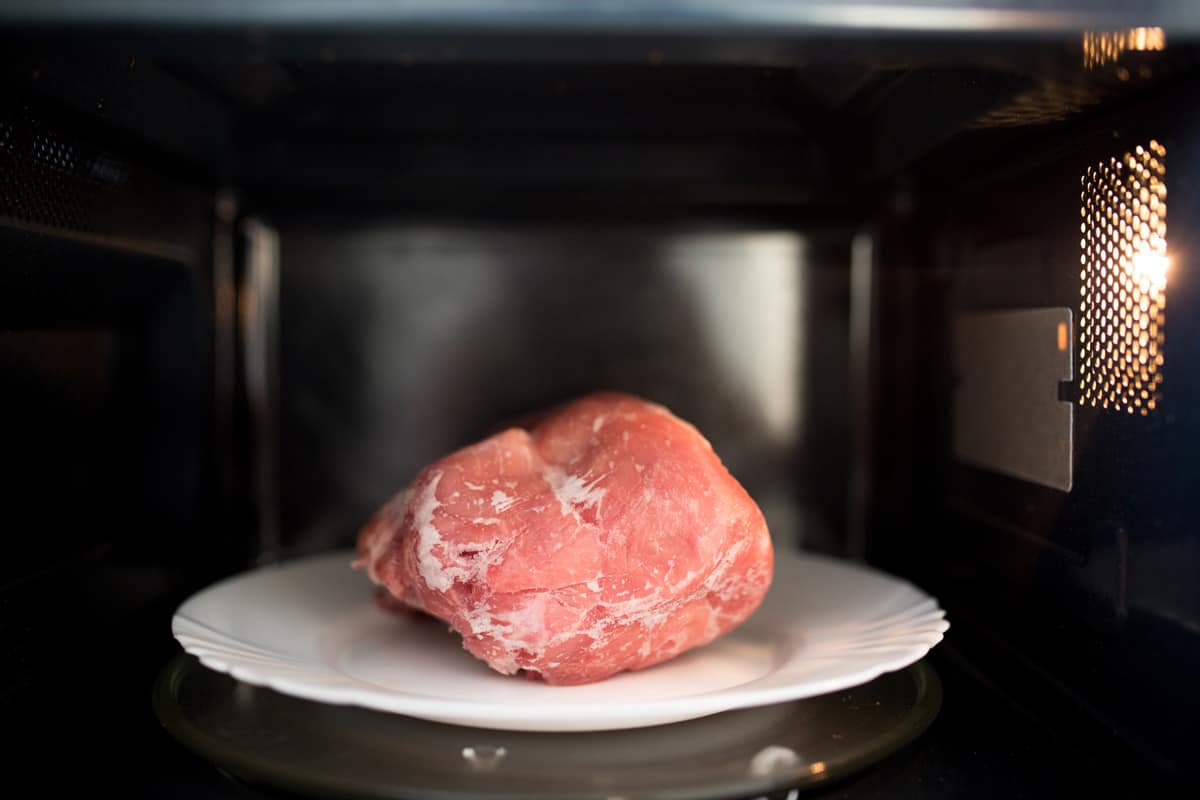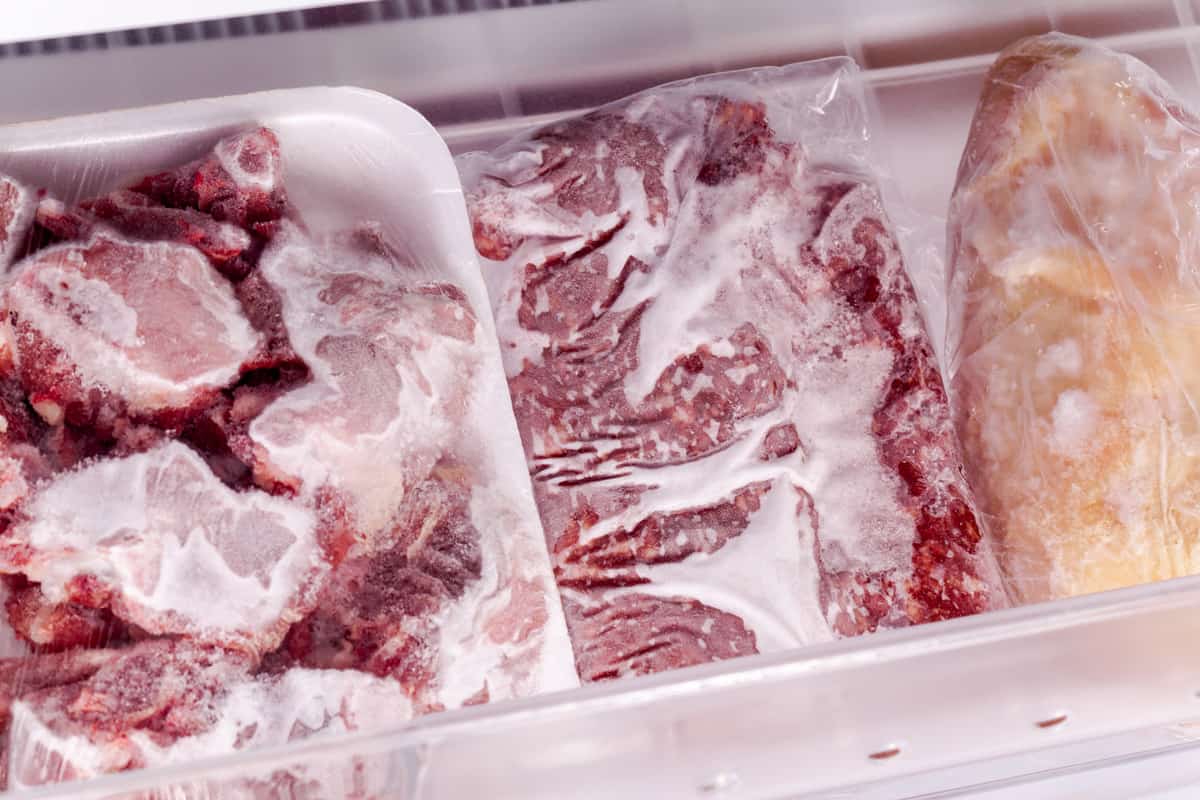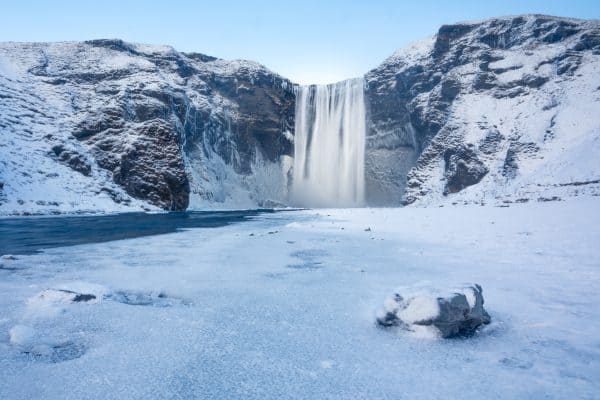Freezing meat is an excellent way to preserve food. However, defrosting it can be a little challenging, especially if you do not know what to do. Don't worry, we've looked into this subject, and here is the right way:
Take the meat out of the freezer and transfer it to one of the shelves in the refrigerator. Leave it there to thaw all night. You can also leave it in your kitchen, soaking in cold water.
You can also defrost it instantly by using the heat in your microwave or stove. Choose whatever method fits your urgency to cook the meat, as they differ in the time you will spend to unfreeze it.
Now, to further understand the different ways we have mentioned, we will discuss it more, including the other essential things that you should know regarding your meat and the process of thawing it. Let's go!
NOTE: WE MAY GET A COMMISSION IF YOU DECIDE TO MAKE A PURCHASE THROUGH THESE LINKS. THERE'S ADDITIONAL NO COST TO YOU. CHECK THE BOTTOM OF THE PAGE FOR MORE INFORMATION.

Thawing A Moose Meat

We will divide the methods into two groups. The first one uses a cold temperature, and the other is through heat. Each has rules to follow that you should be aware of.
Moose meat is an excellent source of nutrients like iron, protein, and vitamin B. There is even research that shows it contains lipids used in food supplements to treat some metabolic and inflammatory diseases.
Moose meat even has the lowest portion of fat (0.5%) compared to other meats, but this does not mean you can be careless with it. Moose meat can carry meat-borne bacteria just like any other meat.
The amount of bacteria may vary for different reasons, one of which is the temperature of the surroundings at the time they were hunted and slaughtered.
Research shows that moose killed during winter have a lesser bacterial count than those hunted during summer, but don't be too alarmed. If handled correctly, these bacteria die in the process of cooking.
To relate this to our thawing topic, choosing between the heat and cold methods will significantly affect your meat. So make sure to read them all carefully!
Using Heat
These first two ways of defrosting your moose meat are the fastest among the rest we will discuss. And since you are probably in a hurry, we will present you with the shortest way to achieve this.
Unfreeze It In The Microwave

After getting the moose meat out of the freezer, put it in a bowl or pan. Make sure that your dish is large enough for the meat to fit in. This will prevent any liquid from leaking into your microwave once the ice is melting.
Remember not to use any material made of aluminum foil, stainless steel, metal, styrofoam, and any non-microwavable plastic in the microwave.
Once the moose meat is settled, put it in the microwave. Press the defrost button if your appliance has this feature. If not, you can just set the heat to its lowest level and set it for a few minutes.
Check out DOWAN's microwavable bowl on Amazon.
How Long Are You Going To Microwave The Moose Meat?
There is no definite length of time here as the duration depends on the pound of the size of the meat. So, keep a close eye on it and check if it is thawed enough before directly putting it on the cooking pan.
Do not leave the meat out too long, as the meat is now not frozen. This means that the bacteria present can now multiply, since they thrive best at temperatures between 41 to 135 degrees Fahrenheit.
That is why if you use this method, ensure that the moment you open that microwave's door, your meat will go straight into the cooking process.
Defrost It In The Pan
If you do not have a microwave in your place, you can use this way of thawing instead. Once you start boiling the water or sautéing the garlic and onions, directly add the frozen meat.
The heat from the stove will break its frozen state. On the other note, this will add up to 50% more of the total time you should have finished cooking. This percentage will depend on how big and frozen the meat is.
Keeping It In The Cold
The following two methods we will discuss will require a longer time but are safer. Even though they both use low temperatures, they still require different approaches.
Leave It In The Refrigerator
This is probably the most popular thawing method that you will hear. It is so common because it requires little effort. All you need to do is to transfer the moose meat to one of the shelves of your refrigerator.
As your meat defrosts, the ice will melt and change into liquid form. Put it in a tray or bowl so it will not flow into your refrigerator and get into the other food there. This will also save you from cleaning up a mess later.
After that, just leave it there overnight. You can expect your meat to be ready to use the next day. It is best to do this if you are going to cook the meat after 1-3 days, since it is not safe to consume it any later than that.
Soak It In A Cold Water

For our last method, you will need water and a bowl or basin deep enough to ensure the whole meat will be soaked at once. Tap water will do fine, but make sure that you will replace it every half an hour.
This is important since you need to maintain the temperature and be sure that it does not reach the "danger zone" or 41 to 135 degrees Fahrenheit.
Also, double-check if the plastic wrap is sealed correctly, and there is no spot for the water to enter and get into the moose meat. Repeat the dispose-and-refill water process until the meat is fully thawed.
Check out this plastic wrap on Amazon.
Are you planning to prepare a seaweed salad along with your moose meat? Read this article, "How To Defrost Seaweed Salad," to know how to defrost it.
Can You Thaw Meat In Water Without A Bag?
Yes, you can thaw meat in the water without a bag. However, it is not advisable to do so. Doing this may take away the meat's taste and cause it to lose its quality. Plus, it will be exposed to the bacteria in the water.
Although tap water in the US is safe to consume, it is still processed with chemicals. Additionally, the US Department of Agriculture does not recommend rinsing the raw meat before cooking to "clean" it.
According to them, this habit can promote cross-contamination because the bacteria in the raw meat can go to the other surfaces in your kitchen or the utensils still in your sink.
So, defrosting meat in water without a bag should be avoided.
If you want to learn more about thawing meats in bags, you should check this article out: How To Defrost Hellofresh Chicken In Bag
What Happens If You Defrost Meat Too Long?

The answer depends on the method of thawing, but the meat might not be safe to consume anymore if it was defrosted longer than the recommended time or was not prepared quickly after defrosting.
Here is the estimated time we are talking about to give you an overview. Take note that you should have used the meat in this period, and anything more than that, you should reconsider cooking or refreezing.
- In refrigerator - 3 to 5 days
- Soaked in cold water - once fully thawed
- Heated in the microwave - once fully thawed
In Summary
Thawing moose meat can be done using low (leaving it on the refrigerator shelf and drain-and-refill method in cold water) and high temperatures (heating in the microwave or using the stove fire while cooking).
If you want quicker methods, refer to the ones that use heat. But if you are not rushing to use the meat, try the ones in the cold category. These are safer, if slower.





